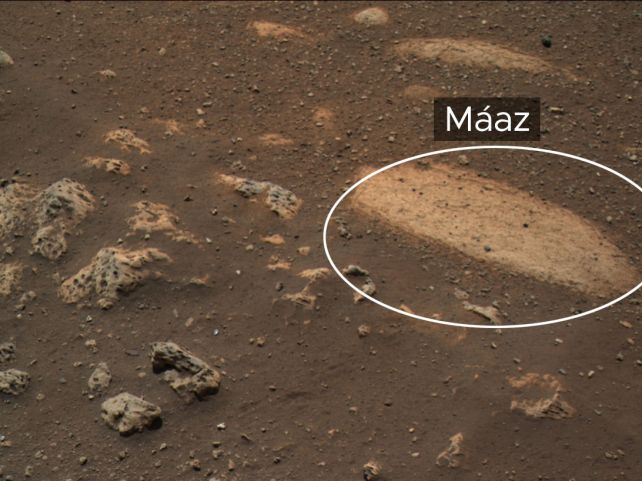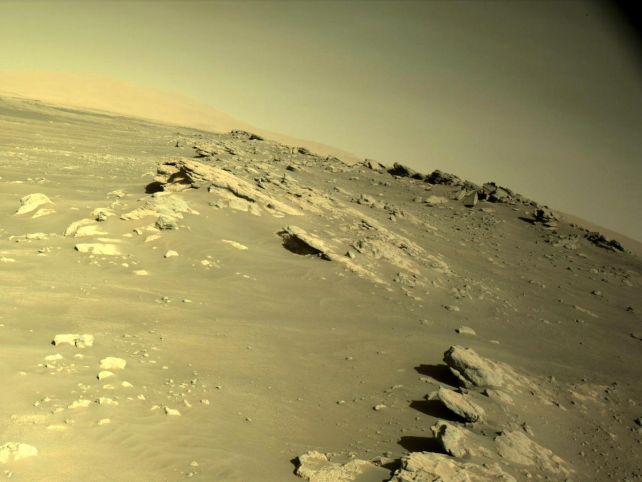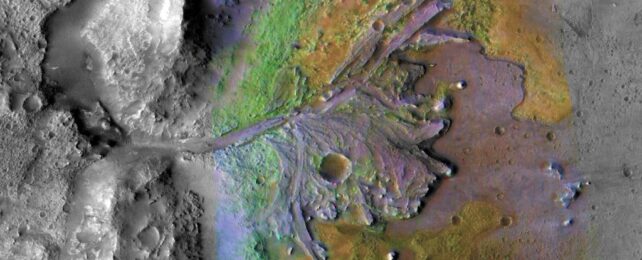Materials found in the rocks of Mars' Jezero Crater suggest that organic matter may be widespread across the red planet.
Spectroscopic analysis using instruments aboard the Perseverance rover has revealed evidence of hydrocarbon molecules in multiple rock formations. Moreover, the detections show different abundances and types of molecules in different rocks.
This is not the first time that organic molecules have been detected on our planetary neighbor – the Curiosity rover found them in the Gale Crater, too – but the discovery suggests the building blocks for life may be widespread across Mars, and supplied by different formation mechanisms.
"We have detected signals consistent with aromatic organic molecules in multiple rocks in the Jezero crater floor," astrobiologist Sunanda Sharma of Caltech, who led the research, tells ScienceAlert.
"We see at least four different types of fluorescence signals and three types of Raman signals that are possibly organic. It looks like the number of fluorescence detections and the diversity of fluorescence signals is higher in the Máaz unit as compared to the Séítah unit. This was surprising and interesting, since such differences could mean that the units had different alteration histories."

One of Perseverance's primary objectives is to look for signs of habitability on Mars. Carbon chemistry isn't a smoking gun for that, of course; there are a lot of non-biological processes that can produce molecules based around carbon. But carbon is essential to life as we know it, so if you want to assess habitability, carbon-containing molecules are one of the key things to look for.
The ability for rocks to preserve these molecules is important, too. These characteristics in a site would suggest that life could have emerged or been supported there at some point in Mars' history.
Using Perseverance's SHERLOC instrument, Sharma and her colleagues applied Raman and fluorescence spectroscopy to rocks from the Máaz and Séítah formations, looking for the signatures of carbon chemistry. Not only did they find the signals they were looking for, they found key differences in the chemistry between the rocks.
"I'm the most intrigued about the comparisons across units," Sharma says.
"Máaz and Séítah did not look the same in terms of the number, type, and mineral associations of the possible organic signals. Now I'm curious about what they might have undergone to yield such differences; how does this fit into our story of Jezero crater?"

Although the exact molecules are yet to be identified, both formations show signs of aqueous alteration. This means that water could have played a role in the formation of the compounds, which is another crucial ingredient for past habitable conditions.
The rover has since moved on, and a wealth of more data is on the way. The next step is to compare different types of rock formations at new locations. This could help the researchers put together a more detailed geological history of Mars and the organic molecules thereon.
The team hopes the apparent widespread occurrence of organic materials means they will be present in the samples that Perseverance is preparing for return to Earth. If this is the case, then we will one day have the opportunity to study them directly.
"This," Sharma says, "is a key piece of a puzzle we are building about the presence, distribution, and types of organics on Mars."
The team's research has been published in Nature.
